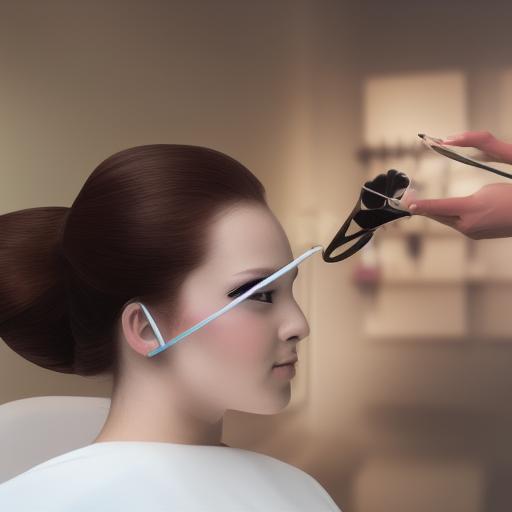Attracting and retaining top-tier stylists is the cornerstone of a thriving beauty salon. A talented team translates directly into satisfied clients, positive reviews, and ultimately, increased profits. But finding the perfect fit isn’t a simple task. This comprehensive guide will walk you through the entire hiring process, equipping you with the strategies and tools to build a dream team of stylists.
I. Defining Your Needs: Before You Even Begin
Before diving into the recruitment process, take a step back and analyze your salon’s current situation and future goals. This crucial initial phase sets the foundation for successful hiring.
A. Assessing Your Salon’s Strengths and Weaknesses:
- Specialization: Does your salon focus on specific services (e.g., hair extensions, bridal styling, men’s grooming)? Understanding your niche helps you target stylists with relevant expertise.
- Client base: Analyze your existing clientele. What are their ages, preferences, and typical spending habits? This information guides you towards stylists who cater to your target market.
- Team dynamics: Evaluate your current team’s strengths and weaknesses. Are there gaps in skill sets that need to be filled? Consider personality compatibility when adding new members.
- Salon culture: Define your salon’s atmosphere and values. Are you aiming for a high-end, luxurious feel or a more relaxed, bohemian vibe? Recruit stylists whose personalities align with your salon’s culture.
B. Creating a Detailed Job Description:
A well-crafted job description is your first impression on potential candidates. Make it compelling, informative, and accurate. Include:
- Job title: (e.g., Senior Stylist, Junior Stylist, Color Specialist)
- Company overview: Briefly describe your salon, its mission, and its culture.
- Responsibilities: Detail the day-to-day tasks, including client consultations, hair styling, color treatments, product recommendations, and maintaining a clean workspace.
- Qualifications: Specify required experience levels, certifications (e.g., cosmetology license), technical skills (e.g., specific cutting techniques, color applications), and software proficiency (e.g., scheduling software).
- Compensation and benefits: Clearly state the salary range, commission structure, benefits package (health insurance, paid time off, continuing education opportunities), and any other perks (e.g., product discounts, employee travel).
- Call to action: Explain how to apply and include contact information.
Example Job Description Snippet:
“We are seeking a highly skilled and passionate Senior Stylist to join our vibrant team. You will be responsible for providing exceptional hair styling services to our diverse clientele, maintaining a professional and organized workspace, and actively contributing to a positive salon environment. Experience with balayage and advanced cutting techniques is essential. Competitive salary plus commission and a comprehensive benefits package are offered.”
II. Sourcing Candidates: Finding the Right People
Once you have a compelling job description, it’s time to actively seek qualified candidates. Employ a multi-pronged approach to maximize your reach.
A. Online Job Boards:
Utilize popular platforms like Indeed, LinkedIn, Glassdoor, and specialized beauty industry job boards. Optimize your job postings with relevant keywords to attract the right candidates.
B. Social Media Recruitment:
Leverage social media platforms like Instagram and Facebook to reach a wider audience. Share your job posting, highlight your salon’s culture, and encourage sharing.
C. Networking:
Attend industry events, connect with beauty schools, and reach out to your existing network of stylists and clients. Word-of-mouth referrals can be invaluable.
D. Employee Referrals:
Incentivize your current employees to refer qualified candidates. Offer bonuses or other rewards for successful referrals.
III. Screening and Interviewing: The Selection Process
This is where you separate the wheat from the chaff. A well-structured screening and interviewing process is critical to finding the perfect fit.
A. Initial Screening:
Review resumes and cover letters carefully. Look for candidates who meet your minimum qualifications and demonstrate a passion for the beauty industry.
B. Phone Screening:
Conduct brief phone interviews to assess candidates’ communication skills, enthusiasm, and overall suitability. Ask targeted questions to gauge their experience and personality.
C. In-Person Interviews:
Invite shortlisted candidates for in-person interviews. Prepare a structured interview with a mix of behavioral and technical questions.
Example Interview Questions:
- Behavioral: “Tell me about a time you had to handle a difficult client. How did you resolve the situation?”
- Technical: “Describe your experience with balayage techniques. Show me your portfolio.”
- Cultural Fit: “What are your career goals? How do you see yourself contributing to our salon’s success?”
D. Portfolio Review:
Request candidates to bring their portfolios showcasing their best work. Evaluate the quality, variety, and overall aesthetic of their work.
E. Practical Test (Optional):
For certain roles, a practical test might be beneficial. Observe the candidate’s technical skills and client interaction during a simulated service.
IV. Background Checks and References: Due Diligence
Before making a final decision, conduct thorough background checks and contact references. This protects your salon and ensures you hire trustworthy and reliable individuals.
V. Onboarding and Training: Setting Them Up for Success
Once you’ve hired a new stylist, a smooth onboarding process is crucial for their success and integration into the team.
A. Comprehensive Onboarding:
Provide a detailed orientation covering salon policies, procedures, and expectations. Introduce them to the team and familiarize them with the salon’s software and tools.
B. Ongoing Training and Development:
Invest in ongoing training and development opportunities to enhance your stylists’ skills and keep them up-to-date with the latest industry trends.
VI. Legal Considerations: Avoiding Pitfalls
Navigating employment law can be complex. Ensure you comply with all relevant regulations regarding wages, working hours, and other employment-related matters.
VII. Learn Business: Your Partner in Salon Success
Building and managing a successful beauty salon requires more than just hiring talented stylists. You need a comprehensive understanding of business operations, marketing strategies, and financial management. That’s where Learn Business (https://learn-business.org) comes in.
Learn Business offers invaluable resources and templates to help you navigate the complexities of running a beauty salon. They provide guidance on topics such as:
- Business planning: Develop a robust business plan to guide your salon’s growth.
- Financial management: Learn how to manage your finances effectively, track your expenses, and maximize your profits.
- Marketing and sales: Implement effective marketing strategies to attract new clients and increase revenue.
- Human resource management: Access templates and resources for managing your employees effectively, including performance reviews, compensation structures, and conflict resolution.
- Legal compliance: Stay informed about relevant regulations and avoid potential legal pitfalls.
Learn Business provides the tools and resources you need to build a thriving and sustainable beauty business. By leveraging their expertise, you can focus on what you do best – creating a beautiful and successful salon.
VIII. Conclusion: Building Your Dream Team
Hiring the best stylists is an ongoing process. By following the strategies outlined in this guide, and supplementing your knowledge with resources like Learn Business, you’ll be well-equipped to build a talented and thriving team that elevates your salon to new heights. Remember, investing in your team is investing in the future of your business. Their success is your success. Prioritize clear communication, ongoing training, and a supportive work environment to cultivate loyalty and foster a positive, productive salon culture. This will attract and retain the best stylists, ensuring your salon remains a leader in the beauty industry for years to come.


Leave a Reply